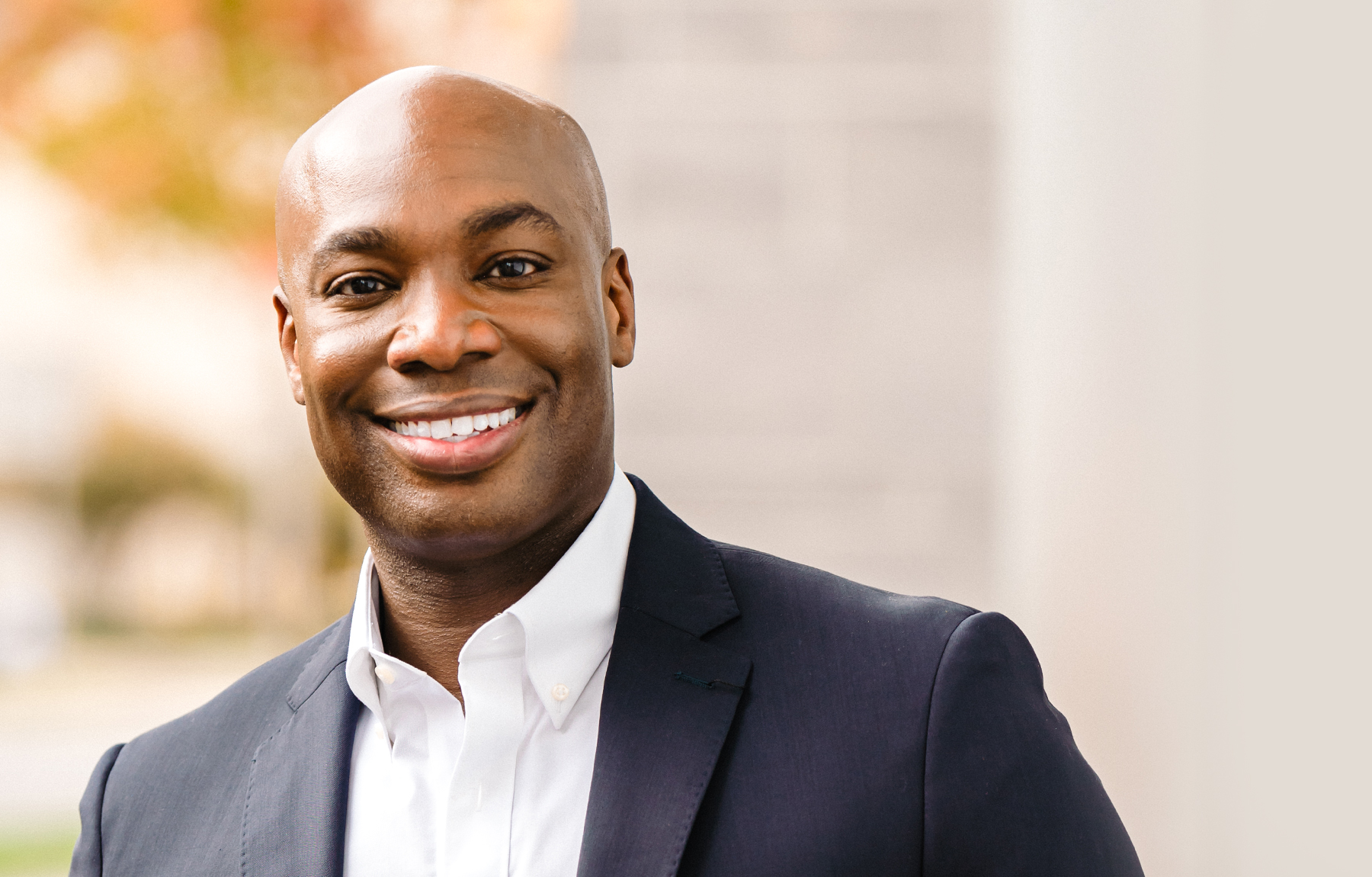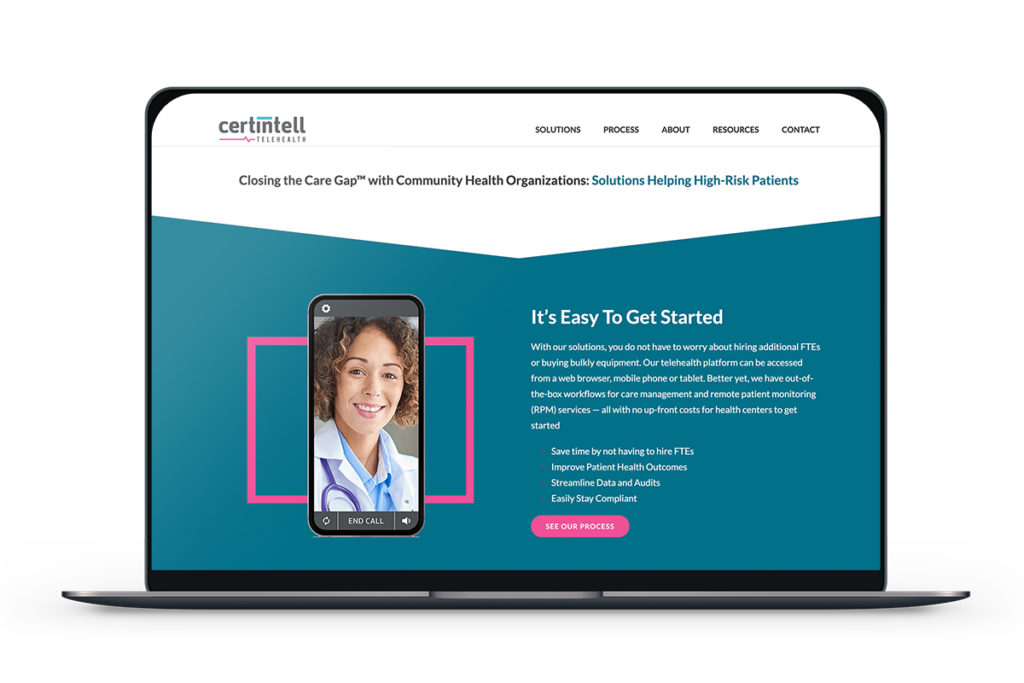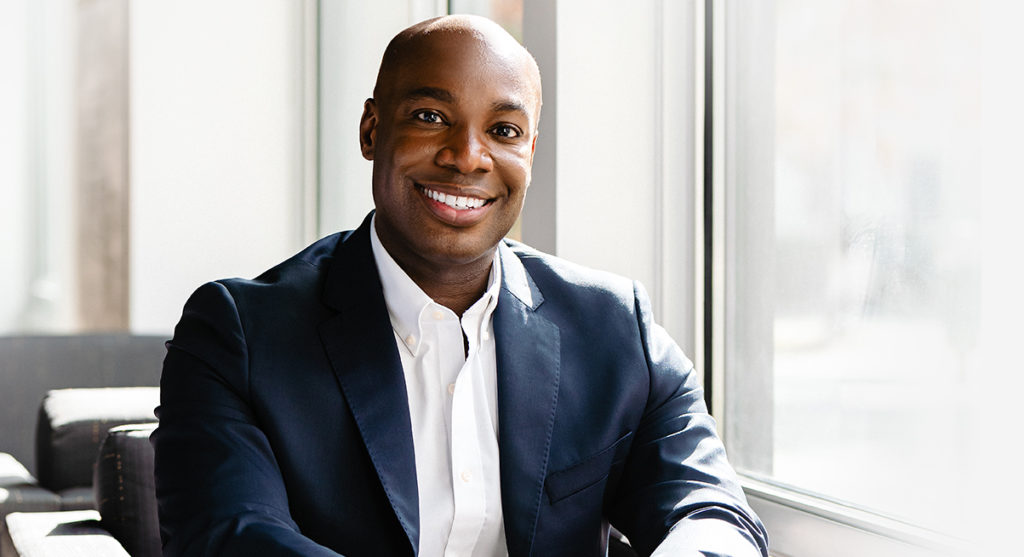
Benjamin Lefever
Benjamin Lefever always had a passion for healthcare. His passion, coupled with his drive to help those who are vulnerable, formed the foundation of Certintell Telehealth. Now more than ever before, telehealth is an essential part of our lives. Ben and his team work to bring telehealth services to everyone who needs access to it, including those who are underserved or in low-income communities.
Can you walk us through your career history and background?
After graduating from Drake University, my career started in the tech industry in varying roles. I came from Indiana, and I had an opportunity to go to Drake University. It had a good communications program. I wanted to be a broadcaster or sports broadcaster. But Drake also had an excellent track program, with the Drake Relays being a premier event. And so, that’s how I got to Iowa.
My career started with Eli Lilly, one of the flagship pharmaceutical companies. In my last role before starting Certintell, I worked in the home office in South San Francisco at Genentech, the founder of biotechnology. I was there from 2007 to 2014 and learned a wealth of experience to help prepare me to go on my own and start Certintell.
What was it like starting a new company, and how did you recognize the need for it in the market?
One of my roles at Genentech was working on a project to help patients with hepatitis C, which is a liver disease and affects mostly underserved, low-income communities. They may have some issues and challenges over their lives that they contracted hepatitis C, but there were very few specialists or liver specialists that knew how to treat hep C at the time.
At Genentech, I worked on a project that allowed me to essentially build remote clinics or connections where rural providers and providers in underserved communities could bring their cases to a specialist through video conferencing like this old video conferencing system back in the day, to help treat their patients locally. Through that implementation, I saw the power of how remote engagement saved people’s lives, helped remove barriers, for example, of having to travel hours to a university hospital setting.
But with that, I worked with these clinics trying to do the best they could for patients, and knew that they needed a lot of help from technology. I knew where that space eventually was going to go. So that’s what kind of got my idea of starting Certintell, seeing the power of how remote engagement effectively saved people’s lives.

From my personal experience, having family members that needed specialized care – my brother was a veteran and was challenged with getting access to some mental health services that he needed. I also have a sister with a disability and the challenges of picking up and getting her into an in-person clinic. So taking the personal experience, my work experience, and then working with these clinics and organizations that try to do the best they can to serve the underserved was the basis for founding Certintell.
Telehealth wasn’t part of how, for example, you or I or our loved ones typically were offered care with our primary care providers or your OB/GYN or your behavioral health therapists. But it’s been around for a while. My goal was always to empower clinicians that have a strong relationship with patients to empower them with tools and technology that allows them to be more accessible to their patients. People thought about it, or were thinking about it, knew it was going to be the wave of the future, but certainly, the pandemic accelerated it because it became a necessity, as patients, communities could not get an in-person visit.
One of the most challenging barriers of why it was slow to adopt was the regulatory landscape. So if I’m a clinician and I want to do this, but I can’t get paid for that type of interaction with the patient, it’s a tough sell, even if it does improve accessibility and allow engagement with patients more frequently. Certainly, we’re not going to go back. This is going to continue to be part of how care is delivered.
What does a day in life look like for the founder of Certintell Telehealth?
Our goal and mission are “closing the care gap.” So everything we do, I try and instill as a team, is our foundation. Closing the care gap, improving health inequities through technology, and the services we provide are tied with the technology. A day in the life is always waking up thinking about that.
So whether it’s a goal of promoting or sharing what you can drive in partnership with our clinics, it is a big part of what I do.
Waking up and setting the strategic plan into action and helping our team implement it is where a lot of our focus lies. But it’s more than that too because you’ve got to do everything as a small company. So I do the grunt work too. I’m on sales calls; I’m reaching out to prospects and customers, I’m on implementation calls, I’m on support calls or hearing feedback or challenges and things like that, and helping address them.
A lot of it is responding to emails, sending out emails, and of course, as you can imagine, a lot of Zoom calls throughout the day. It’s early to rise and late to bed every day.
Closing the care gap, improving health inequities through technology, and the services we provide are tied with the technology.
How have you seen the technology industry evolve concerning health care?
What I call Telehealth 1.0 is the ability to facilitate a remote visit through a tool like Zoom, a video conferencing platform, to engage patients. That’s certainly something that has taken off.
Our focus has been on using technology to engage the highest risk patients, such as those with multiple chronic conditions and frequent flyers to the hospital and the ER. The technology has evolved to focus on those patients. We know the kind of the Teladocs or the Doctor on Demands, that scenario where folks that can afford it or that benefit through their employer can get access to urgent care, to be more efficient, to get a prescription filled quickly. But to significantly impact the health care system, how are you supporting patients because of their socioeconomic status or where they’re at are burdening a lot of the cost systems because of poor health? How can we impact that group? Because that’s going to have the biggest benefit from telehealth.
So, now our focus is what we call Telehealth 2.0, where you’re able to engage patients with connected devices in the home to monitor their health in real-time. And so, that’s where we’re seeing the technology going to more. Not just non-emergent kind of on-demand convenience, but to spend time and provide tools and support that are going to impact the sickest of our patients that tend to be underserved, low-income, and folks that have been missed out from socioeconomic and health inequities for a long time—but also making those tools accessible with their limited resources by sending text messages, links, making it accessible through that. That’s where we see the technology evolving and where Certintell is focused today.
How have you seen diversity evolve in Iowa’s technology workforce?
I think I’m seeing it evolve because I feel it’s a focus of STEM, which is about getting folks early on excited about math and science and technology and all of that, but we still have a long way to go. In the Des Moines community, I know they’re very conscious of trying to think of ideas, particularly within the tech and entrepreneurial community, about how we can be more inclusive and open things up outside of white folks, Caucasian males. And so, there’s an effort to do that.
And so that’s where it all starts. We have a long way to go around that, but efforts are being made. And because there’s effort, it’s not just kind of a soft goal. It’s a hard goal, a mission to be inclusive and bring in folks of different mindsets and ideas because that’s how problems will be solved as we have a continuingly diverse community, not just in Iowa but across the country.
Why is it important to have people of different backgrounds in technology?
When you’re solving problems, particularly in healthcare where a big focus is how can we impact the most vulnerable among us that tend to be in lower socioeconomic areas, you want folks that have that background and experience and lived experiences. And if you don’t have that, it’s very tough to provide a product or service that’s going to connect and have an impact.
There are a lot of technologies out there that are great but not tested with the end-users. In healthcare specifically, we’re seeing a shift that organizations are looking for diverse founders and experiences. By opening things up, very confidently, we’re going to get there. So it’s just shared experiences, lived experiences, taking that, and doing a lot of customer discovery, getting out there. And a lot of you got to feel comfortable going to communities that you may not have lived or what have you, and engage with folks, and find out what their barriers and challenges are. I’m starting to see that, but that’s what it’s going to take to solve these big problems.

When you're solving problems, particularly in healthcare where a big focus is how can we impact the most vulnerable among us that tend to be in lower socioeconomic areas, you want folks that have that background and experience and lived experiences.
How do you, as a leader, encourage innovation and idea-sharing? And, how do you continue to engage with your team during the pandemic?
Again, it all starts with a shared mission. We want people on the team that believe in the mission, believe in what we’re trying to do, and really change healthcare, bend the cost curve for our most vulnerable folks around us.
Once you have folks on your team that are like that, the energy flows, and so, you got to create an environment of letting people share their ideas and thoughts. And not only that, but let them go out and do it and maybe fail, but at least get those experiences about trying different things. Again, but always under our whole goal, what our mission is, what our core focus as a business is around that.
We also have weekly check-ins, and we want to make sure we’re all on the same path, shared challenges and barriers, what’s worked well, what’s not. And of course, right now, because of the pandemic, it is via remote. But in those meetings, it’s just not about, “Hey, what’s going on?” But it’s always set foundationally around “are we moving the needle towards our overall goal of closing the care gap and helping improve health inequities”? What are some of your ideas?
And weekly sometimes can be a lot, even sometimes we go, “Okay, is going to be productive?” But we do it, and every time we get on those calls, people come up with new ideas and thoughts, and we’re able to bounce those off each other. And it’s easier to do that as a small team, but again, it starts to me with getting folks that believe in the mission and believe in what we’re doing, has a passion for it, that is smart. And if you have those core competencies and open up, and me as a leader, not thinking I know everything, giving folks the power to bring forth their ideas and thoughts to move our mission forward.
How do you share your time and talents outside of the office?
It is essential to give back. It’s always at top-of-mind because certainly I’ve had folks that have reached back out to me to be a support, be a cheerleader, believe in me as an individual. And it is my responsibility, particularly the African-American man, to do that, to anyone race or creed, but particularly in communities of color and folks that have an idea, a dream, but just don’t have the mentorship, the capital, or the right connections to do that to give back. One of the quotes that somebody told me said, “Hey, no money, no mission.” So as long as we were able to grow and continue to be this successful, the more opportunities we’ll be able to give back and support the entrepreneurial ecosystem here in Iowa and others, in particular supporting folks of color that have been typically left out of the tech community.
Tell us about any mentors you may have had or still have and how they influenced your career path.
I’ve certainly had folks that have been a cheerleader, provide support, and that’s how I look at it. I’m not the type of person that has always looked at trying to find a mentor. I’m more of a bigger believer to go out and do it, and you learn best from failing, from successes, and all of those things. But the Des Moines community as a whole, which is why I left San Francisco once I started a company, which is the hub of tech, coming back to the Des Moines community because I knew that just the overall support with organizations like yours created more partnership and folks around that just wanting to give you confidence and say, “Hey, go and do it. I like that idea. Iterate that.”
So, I’ve had that type of support here in Iowa, which has been great as a whole. That’s the biggest thing versus kind of saying mentor is just a community of individuals that truly want to see you succeed. When you ask for help and thoughts, they’re there to give feedback and take their experiences, and hopefully, it helps you to give us the best of success. So it’s certainly been a good experience here overall.
What advice would you give a young person considering a tech career or aspiring to work in tech or leadership in general?
Get out and meet people. Obviously, the pandemic is tough, but get out there and engage potential customers and just go out there and talk to people, ask questions. Don’t wait until everything’s perfect to try and get something in the hands of potential customers and all of that, but just go out there and do something.
I think it’s all great to go out to different events, meet people, and attend meetups, but there’s nothing going to replace just going out there and doing something. And you may fall flat on your face, but you’ll learn from it. You’ll get strengthened in getting kicked down and picking yourself back up because that’s really what entrepreneurship is. It’s ups and downs.
And when you do that too, you’re able to see folks are watching that you don’t even know are watching who will see, man, this individual is really grinding and trying to make it happen, is out there, and those are people that can potentially be early investors for you, angels that believe in you as an individual, to help kind of get you into the next level, which is certainly an important part of tech community entrepreneurship and getting some opportunities to meet some certain milestones and continue to grow your company.
But get out there, do something, even if it’s not fully baked, get out there and talk to your prospects, clients. Focus on that versus more a lot of the kind of the kumbaya meetings and meetups.
What I like about the Iowa tech community is that they are very thoughtful and really try to be inclusive. And I think as a whole, we’ll be better for it. I mean, it’s obvious, things are working well. For example, having Techstars come to Des Moines, Iowa. The importance of diversity and inclusion has increased with everything going on around the country this year.
I think we’re going to continue to do exciting things like what’s been happening of late here in Des Moines around the tech community.
What I like about the Iowa tech community is that they are very thoughtful and really try to be inclusive. And I think as a whole, we'll be better for it.

